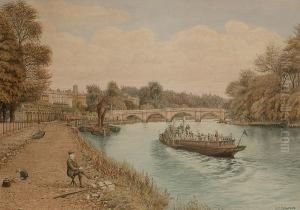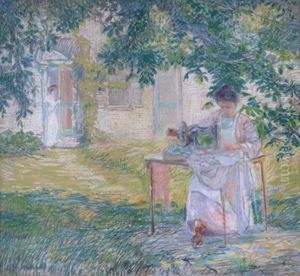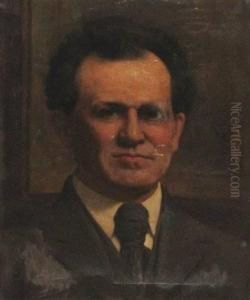Arthur Waston Sparks Paintings
Arthur Watson Sparks was an American painter known for his impressionist landscapes, still lifes, and portraits. Born on September 18, 1870, in Washington, D.C., he developed an interest in art at a young age. Sparks pursued formal art education at the Pennsylvania Academy of the Fine Arts in Philadelphia, where he studied under Thomas Anshutz, a student of the famed American artist Thomas Eakins.
Sparks's style was greatly influenced by the Impressionist movement, which was at its peak during his formative years as an artist. He was particularly inspired by the works of French Impressionists like Claude Monet and Camille Pissarro. Sparks's own work often featured vibrant colors and dynamic brushwork, aiming to capture the effects of light and atmosphere on the landscape.
After completing his studies, Sparks traveled extensively throughout Europe, furthering his exposure to various art movements and techniques. His travels and studies in Europe had a profound impact on his work, evident in the loose brushwork and emphasis on light that characterized his paintings upon his return to the United States.
Upon returning to America, Sparks settled in Pittsburgh, Pennsylvania, and became an active member of the local art community. He taught at the Pittsburgh School of Design for Women and was a founding member of the Associated Artists of Pittsburgh. His work was exhibited in various venues, including the Carnegie Institute, the Art Institute of Chicago, and the Pennsylvania Academy of the Fine Arts.
During his lifetime, Sparks enjoyed a certain level of success and was well-regarded by his peers. However, his career was cut short when he died on January 25, 1919. Despite not achieving widespread fame, Sparks left behind a body of work that is appreciated for its contribution to American Impressionism. His paintings are part of several collections, including the Westmoreland Museum of American Art in Greensburg, Pennsylvania.


